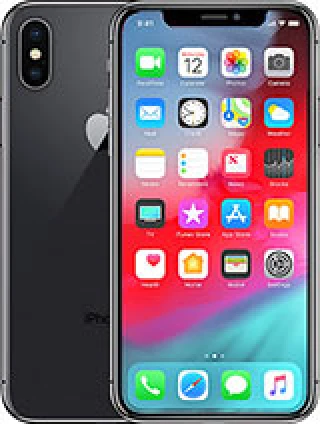Apple iPhone XS Review
- Overview
- Design and Build Quality
- Display
- Performance
- Software and User Interface
- Camera
- Battery Life
- Connectivity and Networking
- Additional Features
- Comparison with Other Related Phones
- Pros and Cons
- Conclusion
Overview
The Apple iPhone XS is a flagship smartphone that was released in 2018. It features a 5.8-inch Super Retina OLED display, Apple A12 Bionic chipset, and a dual-camera setup. With its premium design, powerful performance, and advanced features, the iPhone XS offers a top-notch user experience. However, it does come at a high price point. Let's dive into the details of each aspect of the iPhone XS to understand its strengths and weaknesses.
Design and Build Quality
The design of the iPhone XS is elegant and premium, with a glass front and back and a stainless steel frame. It has a compact form factor, making it comfortable to hold and use with one hand. The device is IP68 dust and water-resistant, providing durability and peace of mind. The display features a notch at the top, housing the front-facing camera and Face ID sensors. The overall design of the iPhone XS is sleek and sophisticated, maintaining the iconic iPhone look.
Display
The iPhone XS features a 5.8-inch Super Retina OLED display with HDR10 and Dolby Vision support. It offers vibrant colors, deep blacks, and excellent contrast levels. The display has a resolution of 1125 x 2436 pixels, resulting in a sharp pixel density of approximately 458 pixels per inch. The screen is also scratch-resistant and features 3D Touch, allowing for additional interaction with the device. The display on the iPhone XS is one of the best in the market, providing an immersive viewing experience.
Performance
Powered by the Apple A12 Bionic chipset, the iPhone XS delivers exceptional performance. The A12 Bionic is a hexa-core processor that offers improved speed and efficiency compared to its predecessor. It handles intensive tasks effortlessly, whether it's gaming, multitasking, or running demanding apps. The device also has 4GB of RAM, ensuring smooth and lag-free performance. Users can expect fast app launches, seamless navigation, and snappy overall performance with the iPhone XS.
Software and User Interface
The iPhone XS originally shipped with iOS 12, but it is upgradable to the latest iOS versions. iOS provides a seamless and intuitive user experience, with a clean interface and a wide range of features. It offers excellent integration with other Apple devices and services, such as iCloud and Apple Music. With regular software updates, the iPhone XS continues to receive new features, enhanced security, and performance improvements.
Camera
The dual-camera setup on the iPhone XS consists of a 12 MP wide-angle lens and a 12 MP telephoto lens. The camera system performs exceptionally well in various lighting conditions, capturing detailed and vibrant photos. The device supports Smart HDR, which enhances dynamic range and improves low-light photography. It also offers optical image stabilization, allowing for sharper images and reducing blurriness in videos. Additionally, the iPhone XS supports 4K video recording at various frame rates. The front-facing camera is a 7 MP sensor that takes excellent selfies and supports features like Portrait Mode and Face ID.
Battery Life
The iPhone XS is equipped with a 2658 mAh non-removable battery, which provides decent battery life. However, it falls slightly short compared to some of its competitors. With moderate usage, the device can last a full day, but heavy usage may require a mid-day recharge. The iPhone XS supports fast charging, allowing for a 50% charge in just 30 minutes when using a compatible charger. It also supports wireless charging, making it convenient for users who prefer wireless charging pads.
Connectivity and Networking
The iPhone XS offers a wide range of connectivity options. It supports 4G LTE, Wi-Fi 802.11 a/b/g/n/ac, Bluetooth 5.0, NFC, and GPS. The device has a Lightning port for charging and data transfer, and it does not have a 3.5mm headphone jack. Users can connect to wireless headphones or use the Lightning to 3.5mm adapter to use traditional wired headphones. The iPhone XS also supports Dual SIM functionality, allowing users to use two SIM cards simultaneously.
Additional Features
Comparison with Other Related Phones
When comparing the iPhone XS with its related devices, such as the iPhone X and iPhone XR, there are a few key differences. The iPhone XS offers a slightly more powerful processor and improved camera capabilities compared to the iPhone X. It also features a more premium design with a stainless steel frame. On the other hand, the iPhone XR offers better battery life and a more affordable price point while still providing a similar user experience. It's important to consider these differences and prioritize your needs when choosing between these devices.
Pros and Cons
| Pros | Cons |
|---|---|
| Powerful performance with the Apple A12 Bionic chipset | Battery life falls slightly short compared to some competitors |
| Premium and sleek design | High price point |
| Excellent camera system with Smart HDR | No 3.5mm headphone jack |
| Vibrant and sharp Super Retina OLED display | |
| Support for fast charging and wireless charging | |
| Dual SIM functionality |
Conclusion
The Apple iPhone XS is a top-tier smartphone that offers a premium experience. It excels in areas such as performance, camera quality, and display. The device's design is sleek and sophisticated, while the iOS software provides a seamless user experience. However, it does come with a high price tag and falls slightly short in terms of battery life. Overall, if you're looking for a powerful and feature-rich smartphone with a premium build, the iPhone XS is a solid choice.


SHARE THIS POST